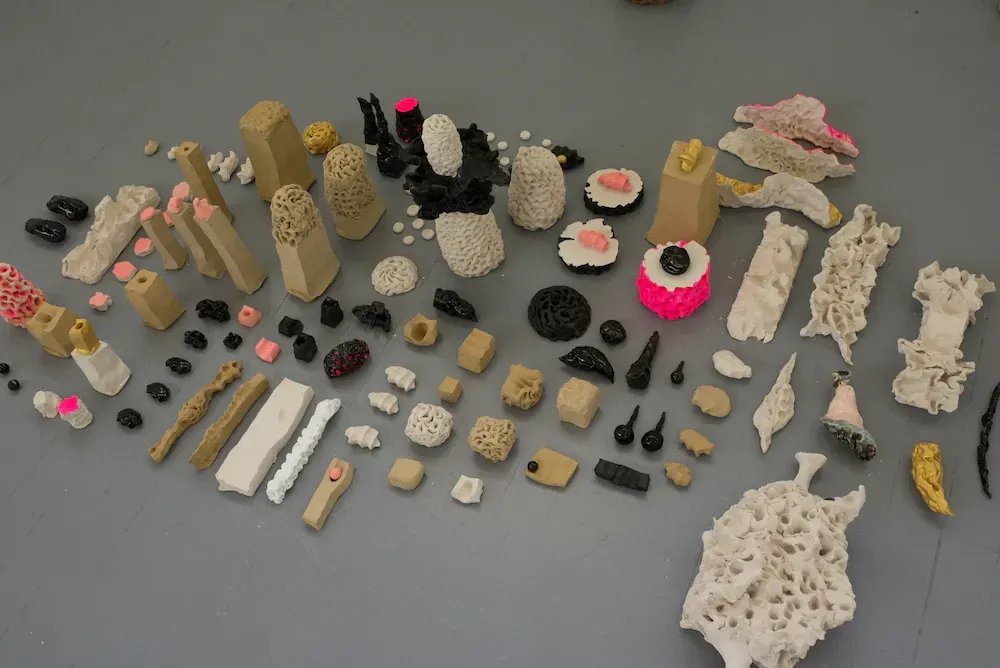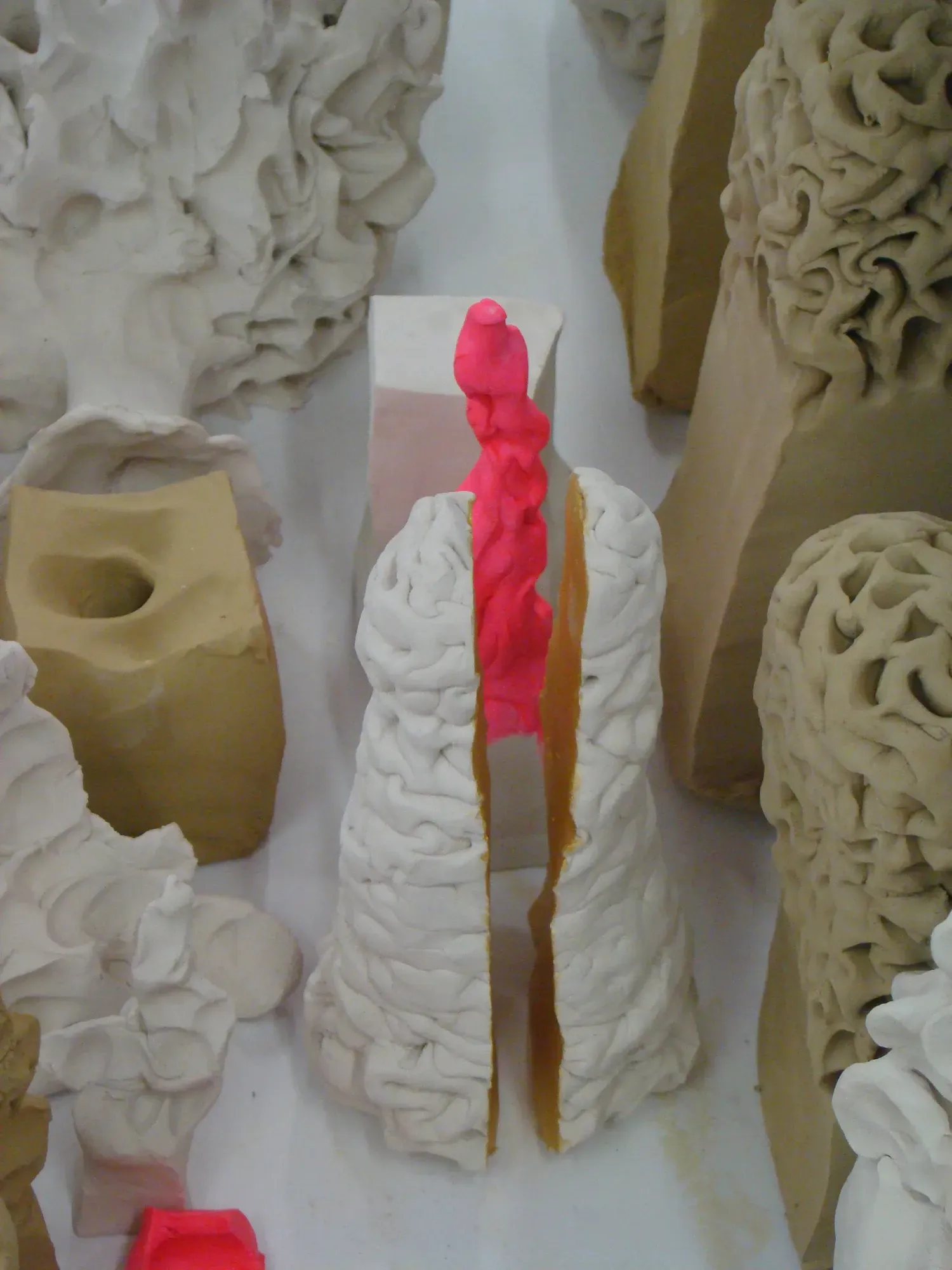Who Got the Gig? Teresa Peters
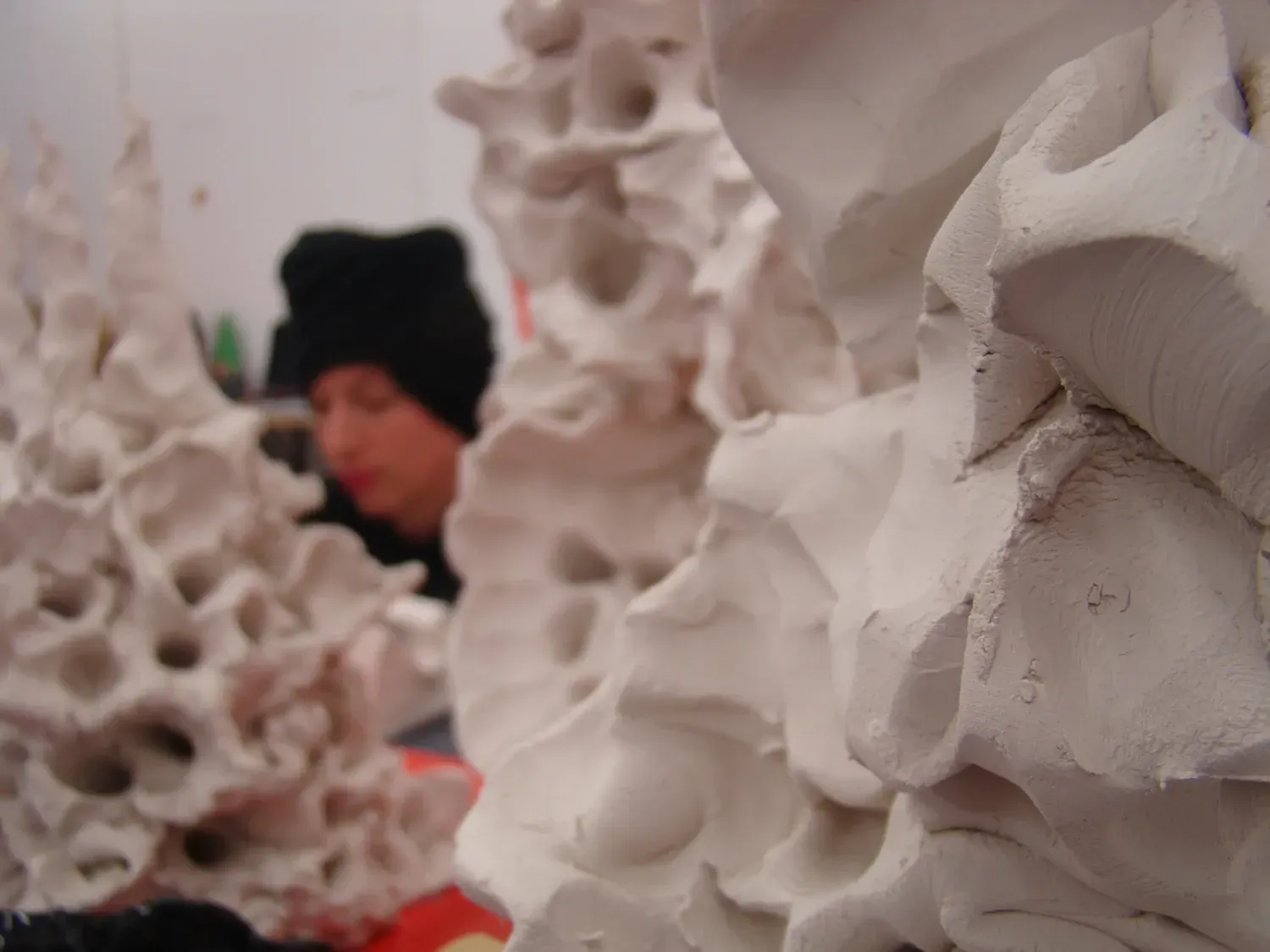
Studio One Toi Tū have recently announced the recipients of their 2018/19 Creative Studio Residencies. A programme supported by Auckland Council, it enables New Zealand artists to develop their practice and create “outstanding and courageous projects.” This years recipients work within a diverse range of artistic mediums including: actor and theatre-maker Katie Burson, writer and illustrator Sophie Watson, digital design duo Da-Ku Set, and ceramic artist and filmmaker Teresa Peters.
I spoke with Teresa Peters about her plans for the residency and her interest in Dark Ecology. Teresa has an impressively extensive artistic background. Not only does she create clay and ceramic artworks and installations, but she is also an art director and filmmaker. During the Studio One Toi Tū residency she will be focusing on her passion for contemporary ceramics. “I plan to evolve my clay and ceramic installation work from my 2015 postgraduate project Rendezvous. I’m very excited about contemporary ceramics at the moment and it’s a crucial time for readdressing our relationship with ecology.”
Dark ecology and primal processes
Rendezvous spoke to themes surrounding Dark Ecology, a term coined by Timothy Morton, and was contextualised within eco-feminism, surrealism and post-minimalism. Teresa hopes to extend these ideas within her new work. “It’s about a change in perspective regarding our environment. I think we are in a major paradigm shift at the moment — the current ecological crisis and political extremities are pushing an awakening environmentally, politically and spiritually. This is really beginning to institute a new ideology.”
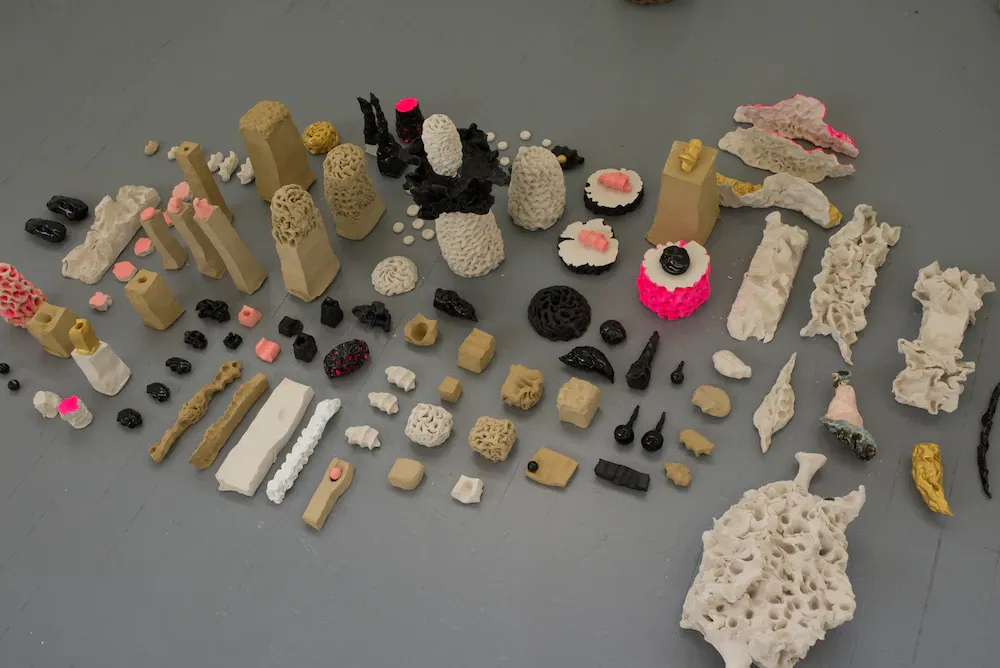
Rendezvous was made up of 200 floor-based ceramic and clay sculptures, or entities as Teresa calls them. She explains, “the entities are kind of like every little element of our ecological system. I was interested in celebrating the diversity of our ecosystem and making people think about how everything is interconnected — humans are in fact their environment, rather than holding a dominant or monumental position. Like the atoms in the air that you breathe, are the same ones that a tree uses… it’s all these diverse life systems interacting with each other.”
Teresa’s ceramic works are created by direct touch and the use of raw clay — she emphasizes that her work is very hands-on, and process based. “What I like about the work I do is that it is very direct, physical and material. It’s almost primal. On the other hand the ceramics process is complex and involves a lot of chemistry. I find it very fascinating. You might have a specific result in your mind, but there is a whole chemical process to undertake in order to get there.”
Hereditary creativity
Art and creativity run deeply within Teresa’s family with her mother and father both attending Elam School of Fine Arts in the 1970s. They were part of the post object art movement and studied sculpture under Jim Allen. This December, they will be exhibiting as part of Groundswell: Avant-garde Auckland 1971-1979 at Auckland Art Gallery. “I was born out of Elam and my own formal art education has been studying twice at the same institution.” In 2000 she graduated in painting and later went back again in 2015 to complete her postgraduate diploma. Looking back on all she has accomplished, Teresa would tell a younger version of herself to, “study art further younger and to travel sooner. Maybe both at once. Follow your intuition.”
Berlin: transformation, secret clubs, cakes, and a thriving art scene
Growing up in an alternative lifestyle amongst rural farming Taranaki, Teresa was keen to travel and experience the world. Travel has been a major influence on her artistic practice and ideals — especially her time spent living in Berlin. Many of Teresa’s friends in Berlin studied at Olafur Eliasson’s Institut für Raumexperimente,(Institute for Spatial Experiments), she worked in the laboratory of Mr Minsch, a German surrealist cake artist and was kin to the “wonderful world” of conceptual artist Mark Dion over this time.
“I guess what attracted me to Berlin over other places was the arts scene there and the liberal/alternative culture. When I first went there in the 90s it was pretty ‘rock ’n’ roll’ and the abandoned east side was getting taken over by artists... when you went out people would tell you to meet them at a store or something and then you would go into the toilets and there would be a trap door leading to the real club downstairs... Berlin’s essence is so layered and I was really attracted to that. Something has really evolved since the city’s recent history of the war and the wall... Berlin is healing and its inhabitants are along for the spiritual journey.”
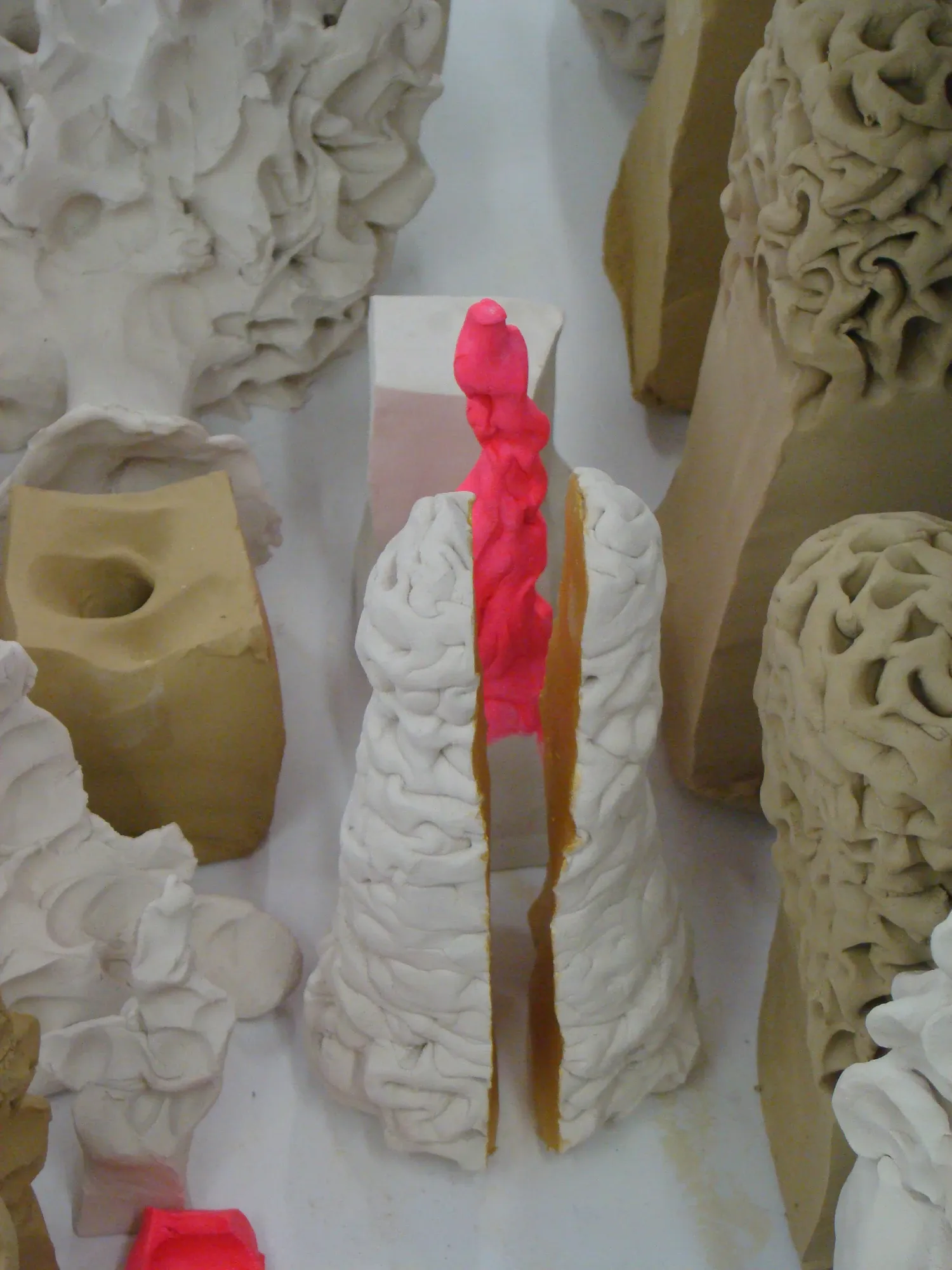
Living and working in Berlin was a very rich time in Teresa’s life — some of what she considers to be her best achievements happened there. She describes her achievements as simply the various moments of her life, as for example “watching myself in a sex scene on the big screen in Woodenhead 2002 in a cinema filled with friends and family, crossing the great wall of China with 85 year old Kenneth Anger, nearly falling on and destroying Jarvis Cocker’s 50th birthday cake while dancing like a dream in Italian wooden soles...”
An unlikely social documentary
Recently, Teresa was the art director for the hybrid-documentary film Spookers by director Florian Habicht — her partner and frequent collaborator (who consequently is a ‘Berliner’). She says, “the film is different from what you would imagine… it’s much more of a social/community piece rather than a horror piece. It’s an unlikely social documentary reflecting on mental health issues and the importance of community in a world prone to growing isolation.”
As art director she has designed the props, made the sets, and planned the visual aspects of the film. “Spookers is really interesting because the film’s aesthetics mirrored the Spookers Haunted Attraction Theme Park itself. The characters dress themselves every Friday night — part of their job is to create their own character. The result is a fresh, hand-made quality… Spookers had quite an extensive art department. For a dream-sequence we even built a giant bed from scratch that had electronic activation so that it could sway like it was flying in the sky and a fabric Ocean inspired by Fellini’s Casanova.” Teresa is currently developing two dramatic feature film scripts with Habicht and team to be filmed in the next few years.
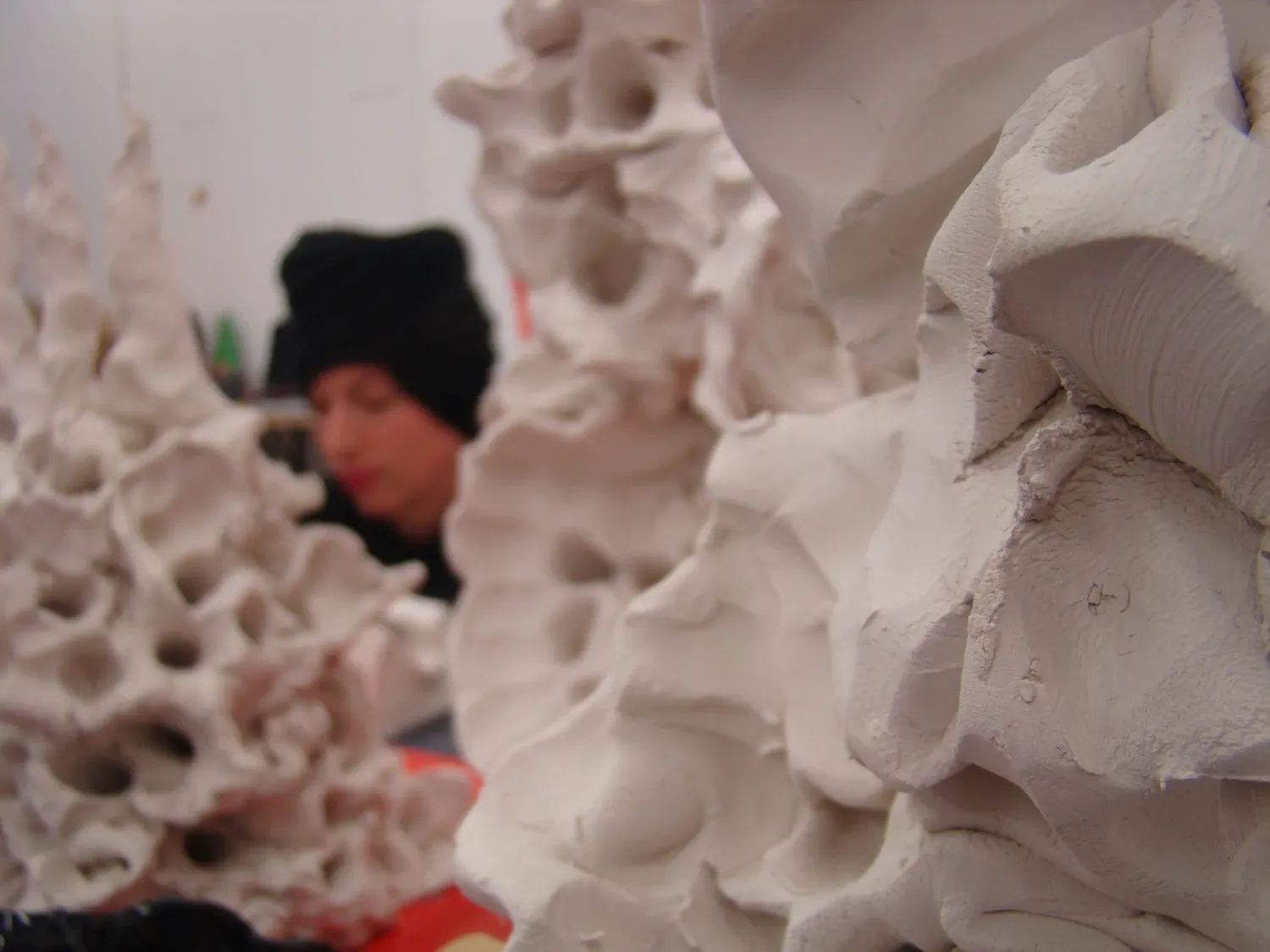
The recipients of the Creative Studio Residencies will be based in the dedicated Ponsonby studio spaces for up to 11 months. During this time, they will have numerous opportunities to experiment with new ideas and workshop their projects with their peers and other creative professionals. At the end of the residency each recipient will exhibit their project outcomes, either as an event or in the Studio One Toi Tū galleries.
Images: Teresa Peters, Rendezvous, 2015. All images courtesy of the artist.
Who Got the Gig? Did you advertise your new gig - or score it - through The Big Idea? Tell us about it!
For 15 years The Big Idea has helped creatives find work and opportunities in New Zealand and arts organisations and creative companies find the right people.
If you've recently appointed someone to a position you can share your announcement in our Community Announcements section straight away, or to be profiled in this series on Who Got The Gig in the creative sector, contact emanuella.deruiter@thebigidea.co.nz
If you have a new job or position to fill please list it in our Work section, or contact us on advertising@thebigidea.co.nz for more information.
